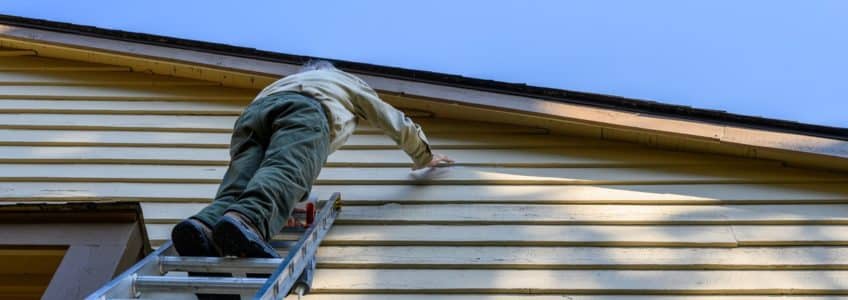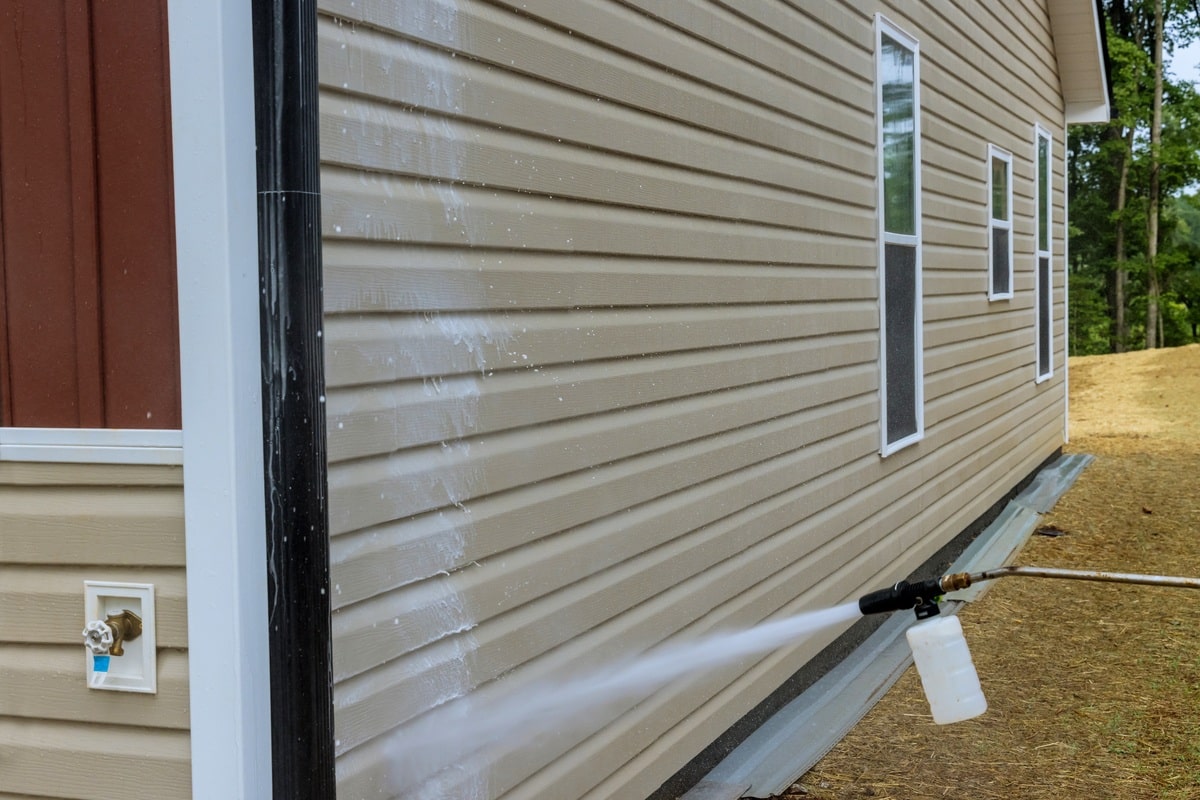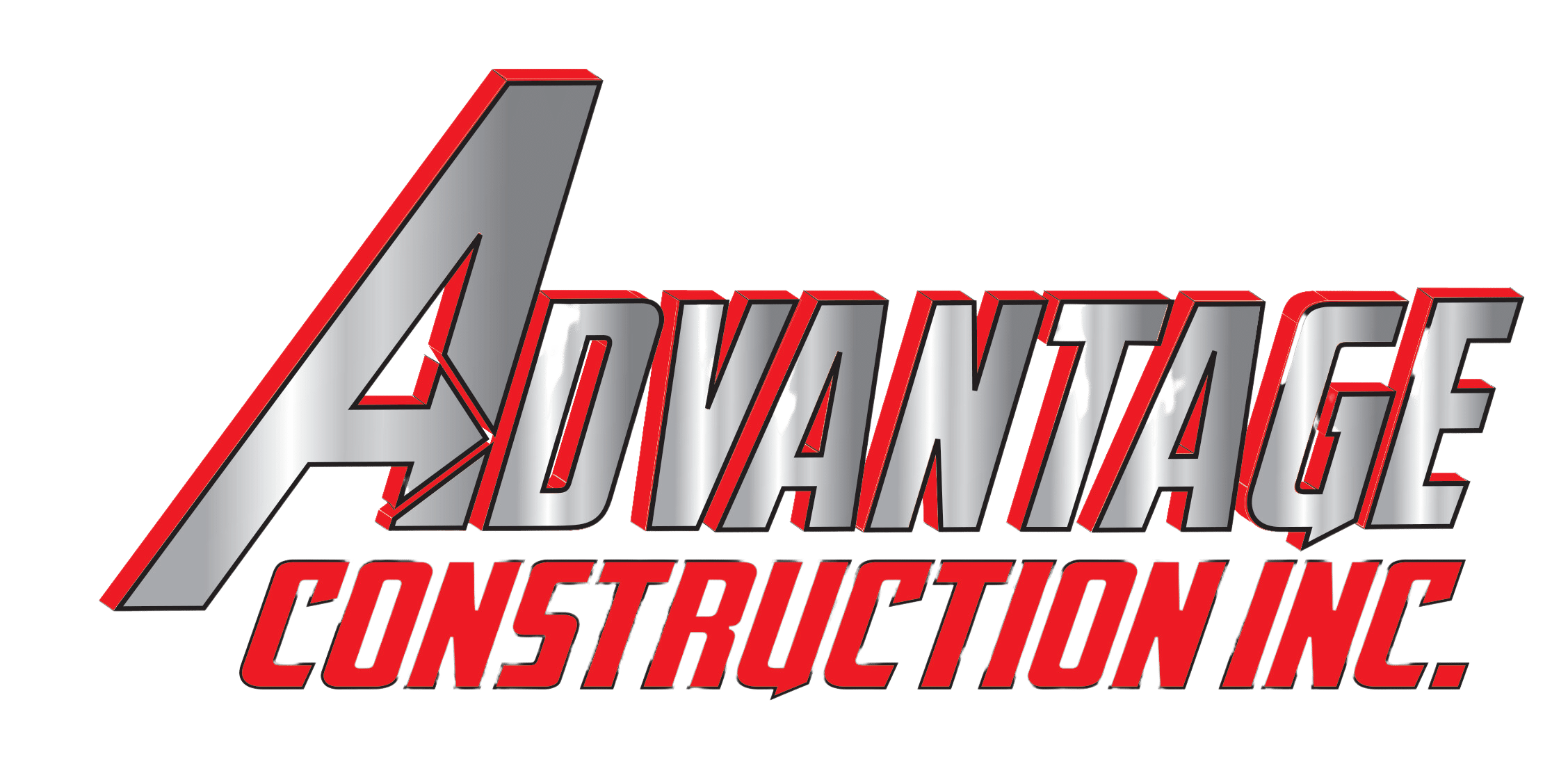
Minnesota homeowners know just how unpredictable the weather can be. Between hailstorms, high winds, and sub-zero winters, the siding on your home needs to do more than look good. It needs to protect your home. If you are deciding between two popular materials, Hardie Board vs. Engineered Wood, consider how each stands up to harsh Midwest weather.
We help homeowners every year make siding decisions after severe weather damage. In our experience, material choice significantly affects how well your home holds up and how much maintenance you’ll need down the road. Here’s what to consider before making your investment.
Durability in Harsh Weather Conditions
Your siding is your home’s first line of defense. Here’s how each siding material performs in Minnesota’s extreme conditions.
Hardie Board: Built for Resistance
Hardie Board, or fiber cement siding, is made from cement, sand, and cellulose fibers. It resists severe weather, such as hail, wind, and fluctuating temperatures.
- It resists warping, cracking, and swelling.
- It is non-combustible and can withstand impact.
- It performs well during freeze-thaw cycles.
We’ve seen homes with Hardie Board siding show minimal damage even after severe hailstorms.
Engineered Wood: More Natural, Slightly Less Tough
Engineered wood siding consists of wood strands bonded with resin and treated for moisture resistance. It offers the charm of wood with better resilience than traditional wood siding.
- Easier to install and lighter than fiber cement
- Holds up well in moderate conditions
- Can suffer moisture damage if not sealed properly
Although engineered wood is a strong option, it often requires more maintenance than Hardie Board after severe storms.
Appearance and Aesthetic Flexibility
Looks matter when you’re investing in curb appeal. Both materials have attractive finishes, but they have some differences.
Hardie Board Finish Options
Hardie Board is available in different colors and styles. It can come pre-finished or primed for painting. Some options look like wood, mimicking cedar planks.
- Long-lasting baked-on color (ColorPlus® Technology)
- Stays vibrant longer than most painted wood surfaces
Engineered Wood Visual Appeal
Engineered wood looks more like real wood, with deeper grain patterns and natural textures. It’s an excellent option for homeowners who want that rustic or traditional appearance.
- Easier to cut and shape
- Paint and stain options available
Both choices allow for flexible design. However, Hardie Board holds its finish better over time, making it a better option in areas prone to storms.
Maintenance and Longevity
The initial cost is only one part of the equation when choosing siding. Durability and maintenance play a vital role in your investment’s value. In Minnesota’s environment, making wise choices now will lead to greater results later.
Engineered Wood Needs More Care
Engineered wood is made to resist moisture but can still be damaged by water, especially at seams and edges. It can break down faster over time if it isn’t sealed and kept up with.
Hardie Board Lasts Longer With Less Maintenance
Hardie Board is non-porous and resists rot, insects, and impact. Once installed properly, it typically requires less upkeep and retains its appearance for decades.
We suggest using Hardie Board for projects that help with storm recovery. It doesn’t need much care and can handle the harsh weather in Minnesota. One reason why James Hardie is a top siding brand is its proven ability to withstand extreme weather while requiring minimal upkeep. Homeowners gain peace of mind knowing their siding will last for decades without compromising appearance or protection.
Hardie Board vs.Engineered Wood Installation Considerations
There are other considerations besides durability while shopping for siding for your Minnesota home. Installation difficulty, personnel costs, and long-term performance are further factors to consider. In terms of reliability, here is how engineered wood stacks up against Hardie Board.
Weight and Handling: Hardie Board Is Heavier
Hardie Board is made from fiber cement, which is significantly heavier than engineered wood. It requires special cutting tools and more labor during installation, especially on multi-story homes or complex layouts. By comparison, engineered wood is lighter and easier to cut, lift, and position. This often leads to faster turnaround times and reduced labor strain during the project.
Labor Cost Differences
Hardie Board is heavy and requires special handling, so installation usually costs more. Contractors may charge higher labor rates or need extra crew members to handle the work safely. Engineered wood is easier to use and often has lower labor costs. It can also save money for bigger homes or when replacing siding, where efficiency matters.
Installation Quality Matters Either Way
While engineered wood may offer a smoother installation process, the key to long-lasting results is expert craftsmanship regardless of material. A properly trained team will install either siding type to meet Minnesota’s building codes and extreme weather demands.
We’re certified at Advantage Construction to install Hardie Board and engineered wood. We’ll walk you through the material and labor trade-offs so you can make the best choice for your home and budget.
Which Material Handles Minnesota Storms Best?
In regions where hail, heavy snow, and freezing rain are common, Hardie Board typically lasts longer and provides superior weather resistance compared to engineered wood. Engineered wood is still a strong option for homeowners who want an attractive, traditional look at a lower upfront cost but requires more frequent maintenance.
If you’re weighing Hardie Board vs. engineered wood, here’s a quick takeaway:
- Choose Hardie Board for durability, storm resistance, and less maintenance.
- Consider engineered wood if budget is the priority and you’re comfortable with extra upkeep.
Whichever option you select, always use a siding inspection checklist after a storm to help you catch damage early and protect your investment for the long term.
Protect Your Home With Durable Siding and See The Advantage

Storm damage can happen at any time, so choose your siding carefully. Picking the right material now can help you avoid costly repairs later.
Reach out to Advantage Construction today to book your siding consultation. We can’t wait to help you explore the great options available and show how each material works well in our local climate. You will get a quote that is tailored to your needs. Our seasoned teams make us a reliable option for homeowners in Minnesota who value quality and reliability.
